What do @nationaiiy, @pixeiise, @morelove, and @lotives have in common? Quite a lot, actually. To begin with, they have this curious habit of plagiarizing tweets and garnering thousands of times the traffic of the originals.
cc: @ZellaQuixote



cc: @ZellaQuixote




@nationaIIy @pixeIise @morelove @lotives @ZellaQuixote These accounts' tweet schedules look mostly organic, although three of them also shared the trait of having a single retweet posted via a tool "MasterAlpha" at the time we first looked. Oddly, these retweets vanished within minutes of us noticing them. We'll come back to this. 





@nationaIIy @pixeIise @morelove @lotives @ZellaQuixote Other commonalities: the four accounts have very few tweets, and seem to crib from the same sources; for example, each shares tweets with @HornyFacts (which also appears to clone most of its material.) We can use this to attempt to find more accounts doing the same thing. 



@nationaIIy @pixeIise @morelove @lotives @ZellaQuixote @HornyFacts To flesh out the network, we searched for accounts with fewer than 1K tweets that retweeted both @nationaiiy and @pixeiise multiple times. We then filtered the other accounts those accounts most frequently RT'd to those that share tweets with @HornyFacts, yielding 60 accounts. 

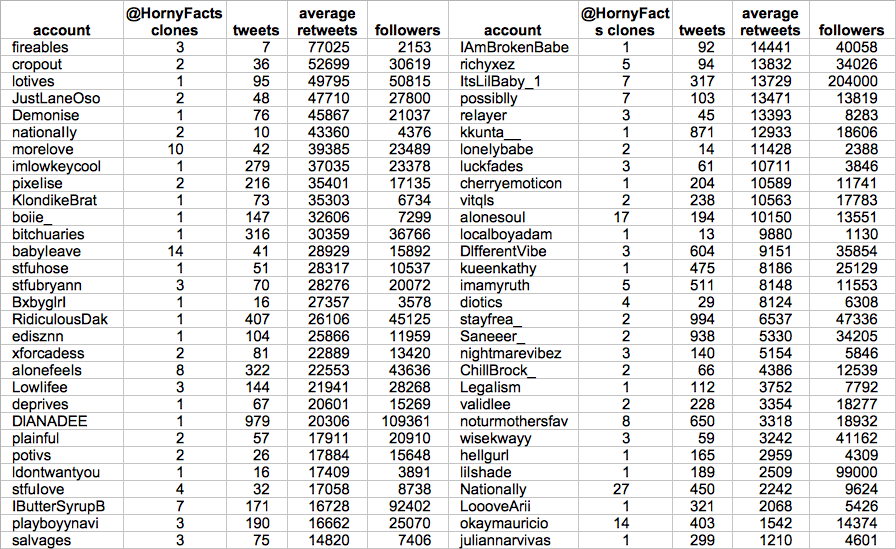
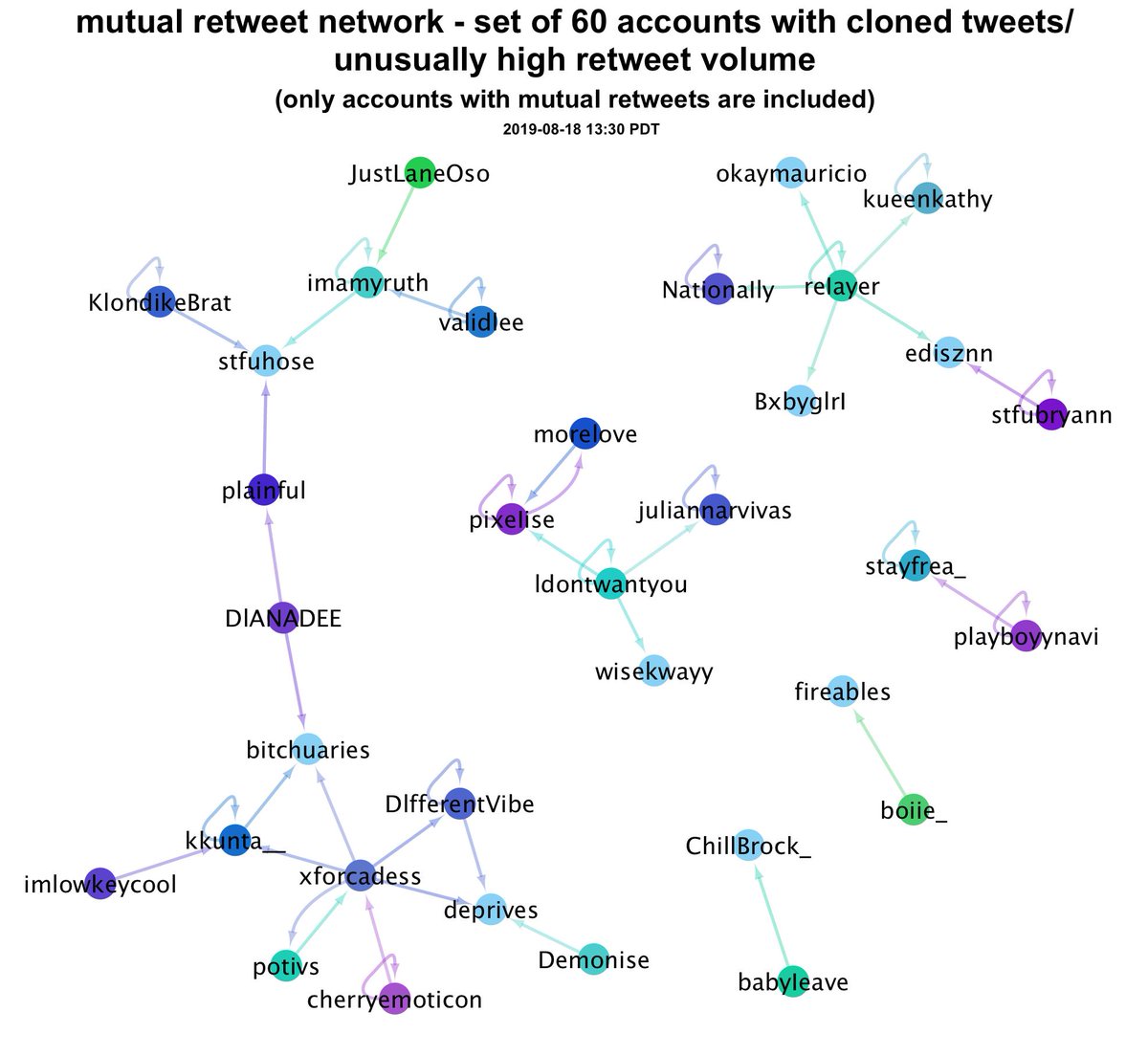
@nationaIIy @pixeIise @morelove @lotives @ZellaQuixote @HornyFacts Combined tweet schedule for all 60 of the tweet-cloning accounts as of 15:00 PDT. It mostly looks organic, but we do see some automated activity via "Hollywood Digital" in the previous hour. Did we tune in at the very moment these accounts became bots? 
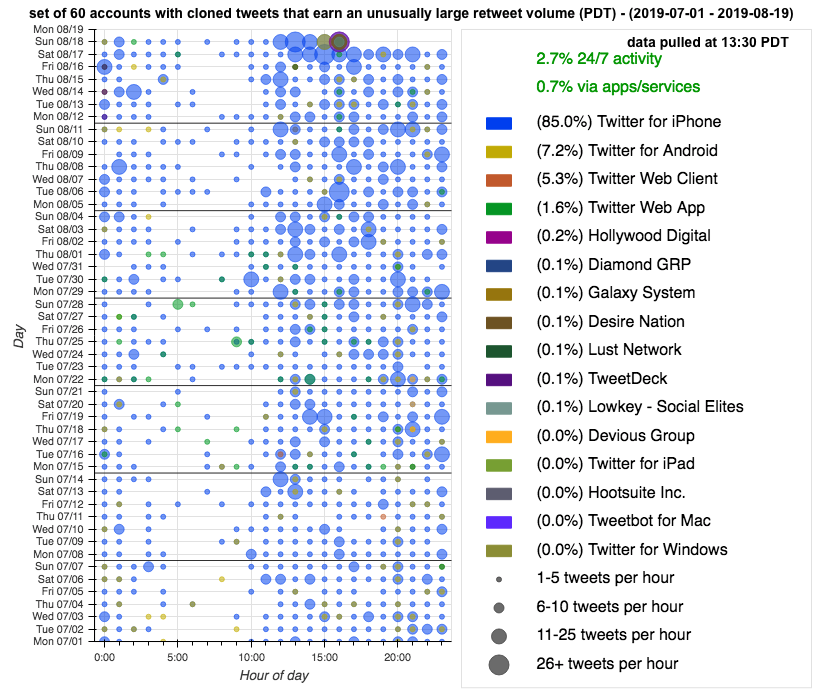
@nationaIIy @pixeIise @morelove @lotives @ZellaQuixote @HornyFacts The answer is a bit more complicated. We noticed earlier that several of the accounts undid automated retweets sent via MasterAlpha, and the same thing happened with the Hollywood Digital tweets. The accounts post automated RTs via a variety of apps and remove them shortly after. 



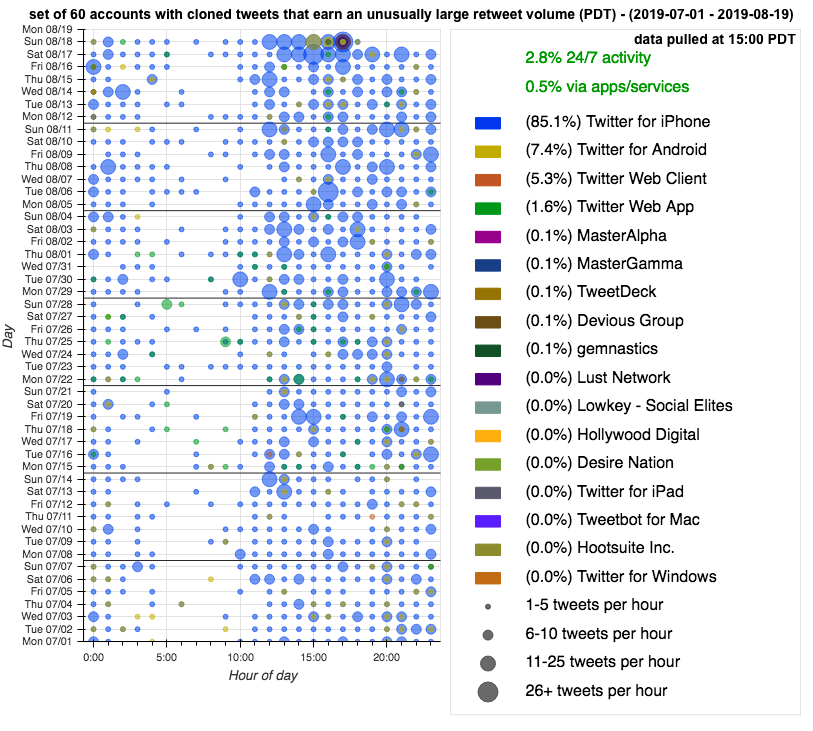
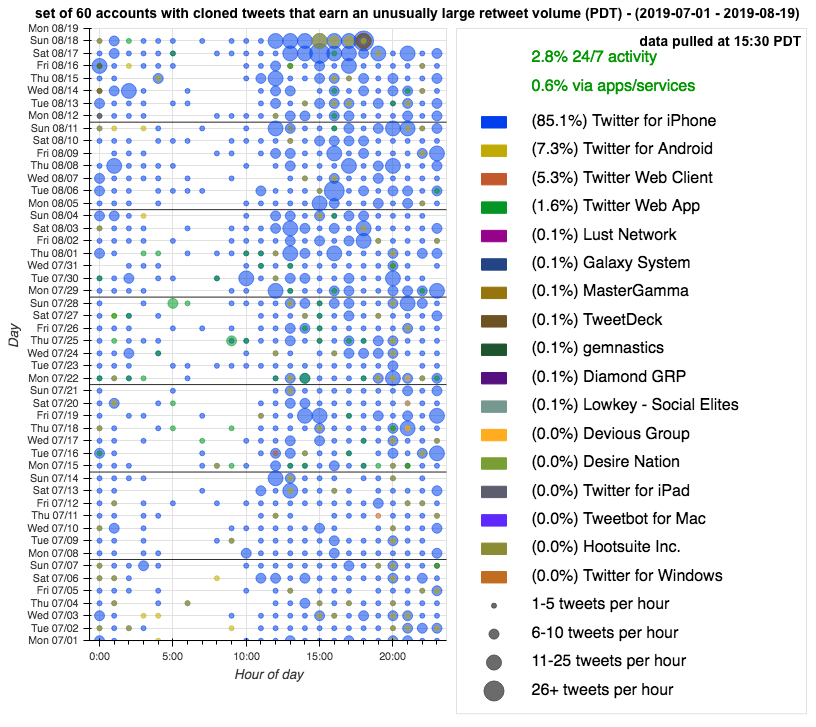
@nationaIIy @pixeIise @morelove @lotives @ZellaQuixote @HornyFacts Why? One hypothesis is that they're leaving the automated retweets up just long enough that the retweeted tweet escapes their bubble and goes viral, afterward deleting their own RTs to remove the evidence of the use of automation. Other explanations are possible.
@nationaIIy @pixeIise @morelove @lotives @ZellaQuixote @HornyFacts Footnote: Although we can't be certain of how this network operates, tweetdecking seems likely - the disproportionate retweet volume on tweets from relatively obscure accounts and the use of plagiarized tweets are hints in that direction.
buzzfeednews.com/article/juliar…
buzzfeednews.com/article/juliar…
@nationaIIy @pixeIise @morelove @lotives @ZellaQuixote @HornyFacts @OutOnTheMoors After posting this thread, we monitored these accounts for three hours to map the quickly-deleted automated tweets. Based on this sample most of the volume (67.8%) is automated, but the frequent deletions maintain the illusion of organic accounts.

https://twitter.com/conspirator0/status/1163233806293319680?s=20
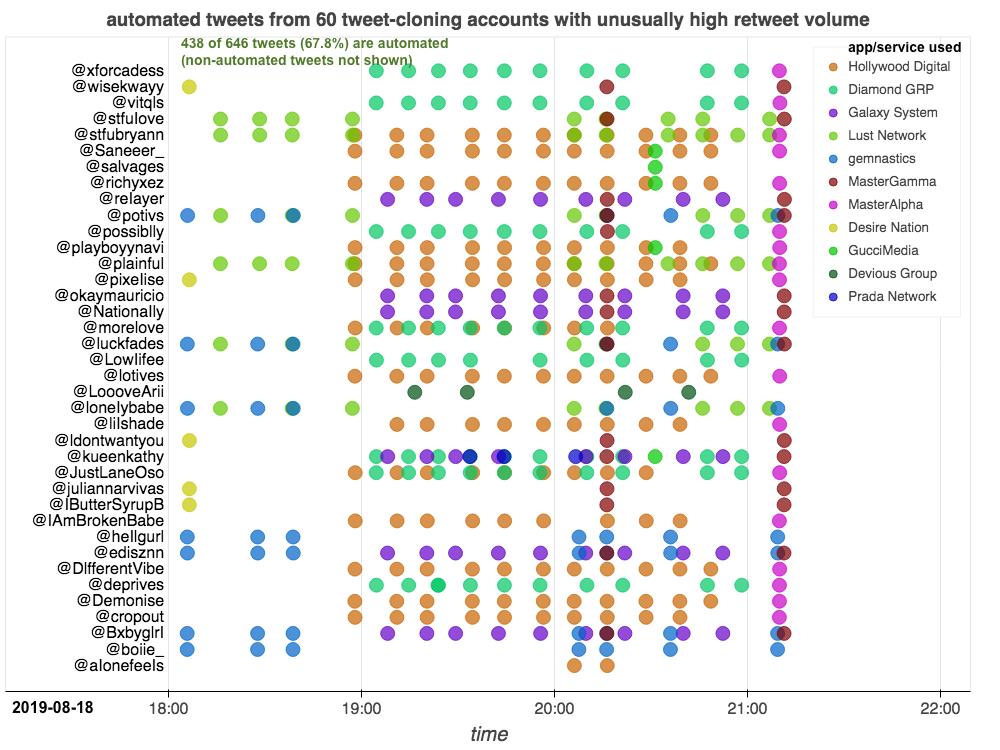
• • •
Missing some Tweet in this thread? You can try to
force a refresh































